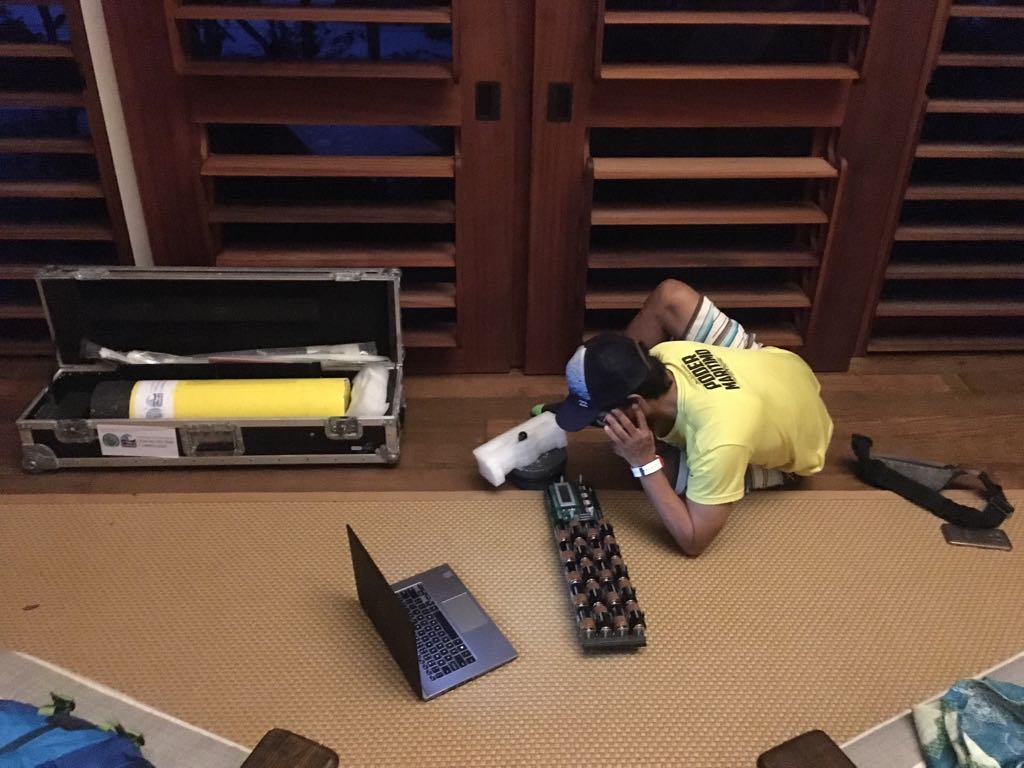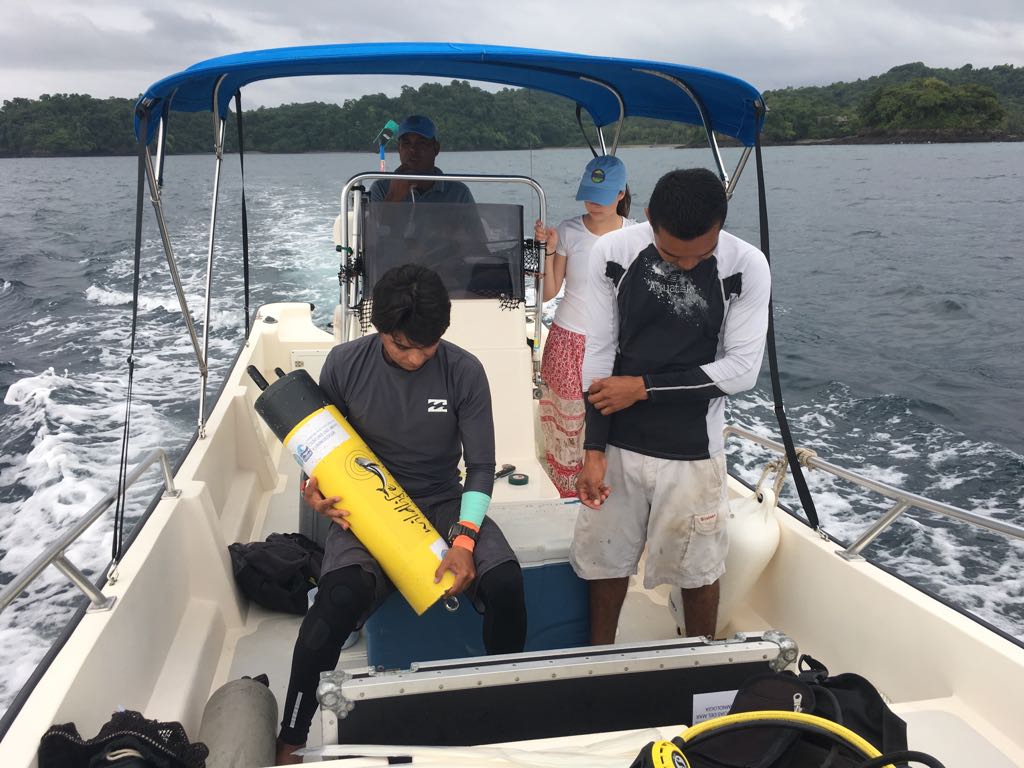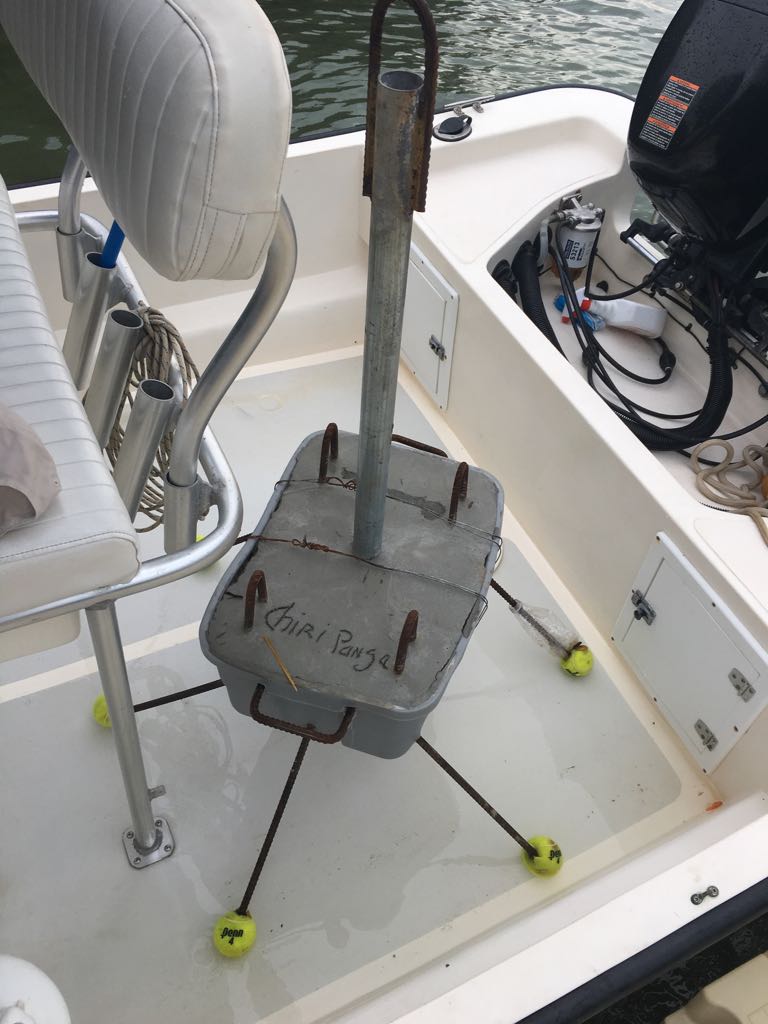This morning, rather than get right to work on humpback photo ID’s, the team submerged an underwater recorder off the Gulf of Chiriqui! We didn’t let the rain dampen our spirits as we headed out with the recorder and our “cangrejo concreto” (concrete crab). It is so heavy, it took four people just to get it into the boat! Pala, Jairo, and Pulo tied a buoy to the concrete crab and submerged it. The crab, designed by our very own Pulo (model adapted from the original designed of Ronald Monge Arias and Jorge May Barquero) helps the hydrophone to remain upright under the water. We wouldn’t want it floating away or falling over! Keeping it upright helps to capture sound more clearly. Pala and Jairo worked underwater for half an hour securing the recorder to the concrete crab. It slipped out of the bag as Pala was diving down, but he caught it before it floated away! Crisis averted!
This recorder will be submerged for the next 21 days, hopefully capturing the beautiful songs of the male humpbacks! These songs are incredibly complex, with different units, phrases, and themes making up a complete song. Scientists believe that male whales sing to attract females. Their songs are thought to be another way of saying, “Hello, ladies! I’m big, strong, and healthy. Look at me!” but they also may be a way for males to compete without getting into physical fights. Songs are also believed to provide information about the male’s size and experience. The whales here make the longest migration of any mammal, from Antarctica to Central America! They come to breed and give birth in the warm waters of the tropics. Perfect for their adorable calves!
While Kristin focuses mainly on photo ID’s and behavior, our colleagues Laura, Pala and I are mainly interested in the acoustics of these amazing creatures. There is just so much to learn about these awesome whales! Hopefully this recorder deployment will help us scratch the surface.
Stay tuned for updates on our whale friends! Before we sign off, we would like to thank Dr. Juan Jose Alvarado of CIMAR and the Department of Biology at the University of Costa Rica for allowing us to the use this amazing recorder and to Eduardo Polo, Director National de Costas y Mares, MI AMBIENTE, for helping us with the logistics of getting this recorder to Panama. We would also like to extend our gratitude to Keto for lending us Pala to coordinate the deployment, to Pulo for building the cangrejo concreto, and to Jairo and all the staff at Las Secas and the Moore Foundation for all of their wonderful support. None of this deployment would have been possible without our awesome collaborators.






